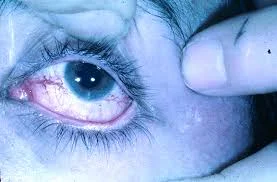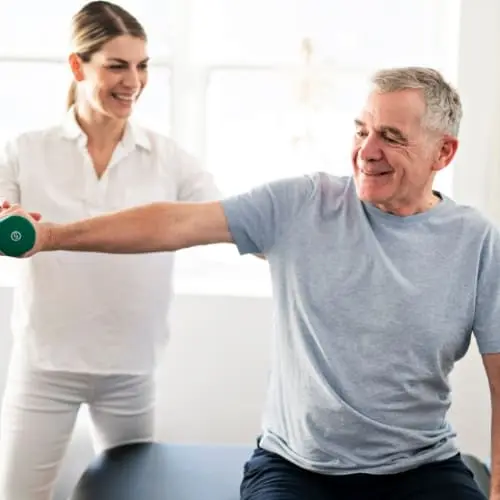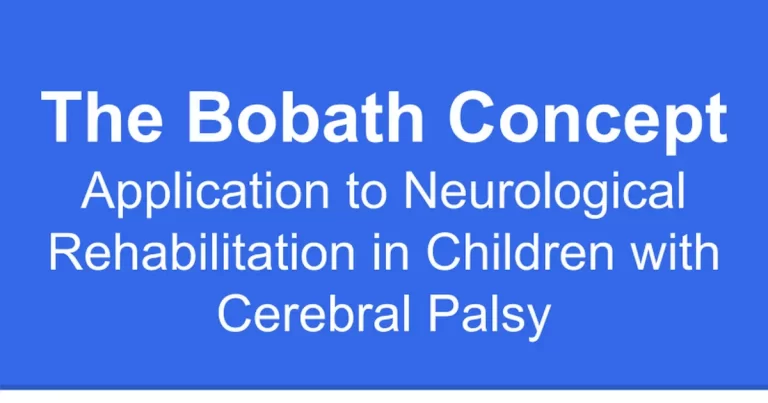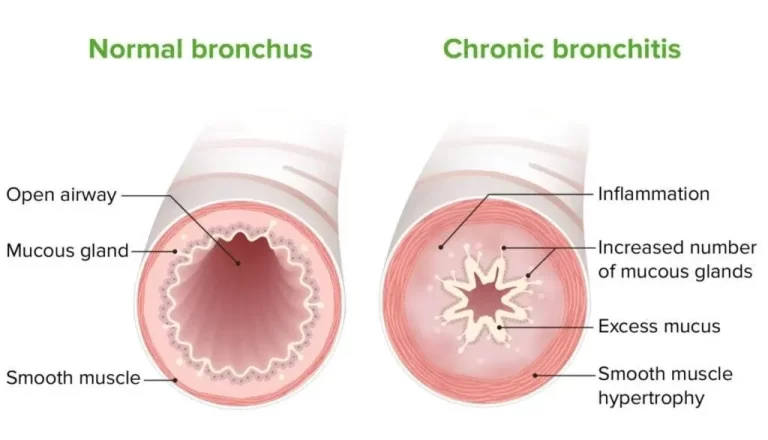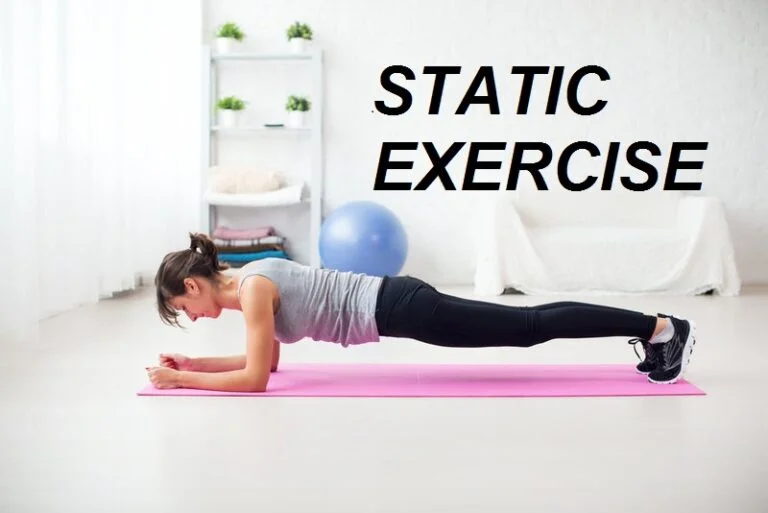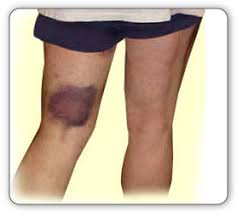Neurological Physical Therapy
Introduction
Neurological physical therapy, also known as neurorehabilitation or neurological rehabilitation, is a specialized branch of physical therapy focused on the assessment and treatment of individuals with neurological conditions or injuries affecting the nervous system. These conditions may arise from various causes such as stroke, traumatic brain injury, spinal cord injury, Parkinson’s disease, multiple sclerosis, cerebral palsy, and others.
The primary goal of neurological physical therapy is to help individuals regain or improve their movement, function, and quality of life by addressing impairments and maximizing their physical potential. This is achieved through a comprehensive and individualized treatment approach that may include various techniques such as therapeutic exercises, balance training, gait training, neuromuscular re-education, functional activities, and modalities.
Neurological physical therapists are highly trained professionals who possess specialized knowledge and skills in the assessment, treatment, and management of neurological conditions. They work closely with patients, their families, and other healthcare professionals to develop customized treatment plans tailored to each individual’s needs and goals.
Recent years have seen tremendous progress in neurological physical therapy, driven by a better comprehension of neuroplasticity and the use of cutting-edge technologies in rehabilitation procedures. The current state of neurological physical therapy is examined in this review article.
Which covers evidence-based practices, cutting-edge technological advancements, and comprehensive rehabilitation plans.
The field of neurological rehabilitation is changing, with a focus on improving quality of life, encouraging functional recovery, and providing patient-centered care. consist of neurostimulation methods, robotics-assisted therapy, task-specific training, and constraint-induced movement therapy.
Furthermore spoken about is how interdisciplinary cooperation and patient education may maximize the results of rehabilitation.
This paper seeks to shed light on the present and potential paths of neurological physical therapy via an interdisciplinary lens, emphasizing chances to improve patient outcomes and clinical practice.
Neural disorders, including stroke, traumatic brain injury, spinal cord injury, and neurodegenerative illnesses, provide substantial obstacles to people’s functional capacities and well-being.
The goals of physical therapy, which include restoring movement, enhancing motor function, and encouraging independence, are vital to the recovery process.
In neurological rehabilitation, there has been a paradigm shift throughout time that has moved away from conventional methods and toward more dynamic and customized interventions.
The progress in neurology, rehabilitation research, and technology has led to a change in the treatment options available to patients and physicians.
What Is Neurological Physiotherapy?
Treatment for physical symptoms and mobility impairments resulting from brain or nerve illnesses is known as neurological physiotherapy. Specialists in this field of physiotherapy employ a variety of methods to teach movement patterns that balance muscle tone, strengthen muscles, and repair nerves.
The following are the most typical physical signs of neurological disorders:
- balance issues
- muscular rigidity
- reduction in muscular tone
- weakened state
- sensations in the skin that have been lost
- diminished strength in the muscles
- sensations of pins and needles
- tremors
It is preferable to see a neurological physiotherapist even if general physiotherapists can treat patients with neurological problems. Studies indicate that patients with neurological diseases like Parkinson’s disease who receive specialized physiotherapy treatment have better outcomes with fewer problems.
Medical Conditions Treated Under Neurological Physical Therapy
Stroke
A stroke is medically referred to as a cerebrovascular accident (CVA), or, in non-scientific jargon, “brain attack.” It occurs as a result of brain blood vessel ruptures. As a result, certain areas of the brain experience a loss of oxygen and nutrients, while other areas experience a hemorrhage (creation of blood clots).
Among the stroke symptoms that physical therapists treat are:
- issue with coordination and balance.
- Weakness, muscular strength loss on one side of the body, and eventually increasing stiffness.
- One side of the body experiences discomfort, burning, and tingling sensations in addition to a lack of skin sensation.
- partial facial expression loss along with associated speaking and swallowing difficulties.
Following a stroke, patients frequently begin to ignore the side of their body that is afflicted. We work with them to break that habit and reestablish movement in the damaged areas using specific neurological procedures.
Bell’s Palsy
Bell’s palsy is a transient loss of muscle tone and feeling on one side of the face. Numerous things, like an ear infection or injury to the facial nerve (which supplies the face’s muscles), can trigger it.
Bell’s palsy physical symptoms that are treated with neurological physiotherapy include the following:
- One side of the face with paralysis or weak muscles
- Having trouble shutting your lips to swallow liquids, which results in drooling and an uneven smile
- incapable of closing or opening their nose on the afflicted side
- difficulty on one side of the eyes closing and opening when frowning
- loss of expression on the afflicted side of the face
Bell’s palsy patients typically have very good prognoses. Some studies reported full healing after a few months from the start of the condition and improvement within three to four weeks.
Cerebral Palsy (CP)
Patients with this illness experience modest to severe cognitive and physical disabilities. It may result from exposure to chemicals, problems with in-utero development, or from the brain not receiving enough oxygen at birth.
A neurological physical therapist can treat the following physical symptoms of cerebral palsy:
- Either the muscles are overly floppy or too rigid.
- weakening of the muscles, particularly those needed to keep one’s posture
- Jerky motions are those that aren’t controlled as they would be in a physically healthy individual, such as abrupt stops, abrupt changes in speed, or unexpected stops.
- Postponed benchmarks
- Walking on tiptoe and lacking fine motor abilities
Our objective is to enhance the quality of life for both the patient and the caregiver, as cerebral palsy is a permanent condition. To do that, we collaborate with physicians, occupational therapists, and behavioral therapists in a multidisciplinary team. For these individuals, physical therapy is ongoing throughout their lives, and treatment methods adapt as symptoms do.
Cauda Equina Syndrome
The lower back is where the spinal cord finishes. The lower limb is still supplied by a group of nerves known as the Cauda Equina. These nerves (spinal cord) form a balloon outside the spine due to a breach in the continuity of the backbone during fetal development.
This causes varied degrees of weakening and loss of feeling in the cauda equina-supplied areas. Adults may also experience damage to these nerves as a consequence of trauma, surgery, spinal anesthesia, etc.
Physical therapy is used to address the physical symptoms of cauda equina. Among them are:
- weakness or paralysis of the lower limb’s muscles
- Balance and coordination problems during sitting, standing, and walking
- tingling in the lower extremity
Depending on how severe the issue is, persons with saddle anesthesia recover to varying degrees. We create fitness regimens based on the unique problems that each of our patients faces.
Sciatic Nerve Irritation
The sciatic nerve is one of the nerves that supply the lower limb. It has several nerve roots in the area of the lower back and buttocks.
It can get inflamed at any point along its course, including the nerve root. Consequently, you may experience the following bodily symptoms on the afflicted side:
- Pins and needles, tingling, or burning feeling both when at rest and when moving
- Muscle pain in the lower back, along the buttock, behind the knee, and at the back of the thigh is located along the nerve’s course.
- Insomnia in the lower extremities.
Sciatica is a prevalent ailment that has a 10% to 40% lifetime occurrence. Physical therapy combined with appropriate measures typically resolves it. Among the symptoms covered by neurological physical therapy are those mentioned above.
Radial Nerve Palsy
One of the primary nerves in the upper limb is the radial nerve. It originates from the axilla, or under the armpit, flows through the arm’s posterior region—the side where your forearm has less muscle belly and triceps—and supplies the hand laterally, on the thumb side.
The radial nerve is the one that allows you to extend your fingers, wrist, and elbow. Radial Nerve Palsy is the term for damage to this nerve, and its symptoms include:
- Weakness in wrist and finger muscles
- Tics, side of the arm, thumb, and first two fingers all numb
- Not able to squeeze
- Wrist drop: When your wrist is pushed toward gravity because you are unable to extend it.
Physical therapists with expertise in neurological disorders can assist patients with these symptoms. Radial nerve palsy can be effectively treated with physical therapy, but only if treatment begins early. If not, your hand may become weak or suffer long-term abnormalities (Reference).
Peroneal Nerve Injury or Compression
A branch of the sciatic nerve is the peroneal nerve and Tibial nerve. Peroneal Nerve supplies portions of the leg’s muscles and skin, as well as the top of the foot. It may become inflamed or compressed as a result of a leg fracture, an issue with the knee, or anything applying pressure from the outside to the leg.
Compression of the peroneal nerve can manifest as:
- Foot drop as a result of the dorsiflex muscles’ inability to receive signals to raise the ankle higher.
- Pins and needles and numbness in the nerve’s supplied areas
- weakness in the peroneal nerve- innervated muscles
Depending on how much of the peroneal nerve is compressed, different symptoms can occur. The majority are managed with neurological physical therapy.
Ataxia
This is a brain injury-related issue in motor control. It may occur as a side effect of a stroke, Parkinson’s disease, alcoholism, drug side effects, genetic factors, etc.
Neurological physical therapists can address the following ataxia symptoms:
- diminished hand-eye coordination
- loss of fine motor abilities required for everyday life tasks.
- problems with balance when walking, standing, and sitting
- shakiness when moving
When ataxia develops as a subsequent complication of another neurological disorder, it might be a permanent condition for which physical treatment is required to manage the physical symptoms.
Migraines and Headaches
A number of factors, including insufficient sleep, exhaustion, overstimulated surroundings, excessive brain cell activity, dehydration, etc., can cause migraines.
Migraine and headaches with a physical etiology are treated by neurological physical therapists. Among the symptoms are:
- crippling headache
- shakiness when walking
- dizziness and vertigo
We treat migraines with neurological physical therapy, which targets the underlying reasons for the headache. It involves manual therapy methods to release nerves trapped between stiff neck muscles or bones.
What does neurophysiotherapy consist of?
As previously stated, the goal of neurophysiotherapy is to assist in the rehabilitation of physical deficits caused by neurological diseases. It is customized with a goal-oriented target to meet the unique demands of every person.
For instance, does the patient require significant progress, like relearning how to walk, or just minor adjustments to small, precise movements? On the first appointment, skilled neurological physiotherapists will decide this.
The ability of the brain to both create and destroy connections is known as neuroplasticity. Unlike conventional physiotherapy, neurophysiotherapy makes use of this phenomenon to assist the brain in creating new synaptic connections.
It essentially rewires the brain to acquire new skills and jobs. In cases where a patient needs to regain their ability to walk, stand, or sit due to serious impairment, neurophysiotherapy can be administered one-on-one.
To make the rehabilitation process more fun and to create a friendlier environment, other chores like walking and mild workouts can also be undertaken in groups. Simple passive exercises or specially designed activities to improve strength and coordination are only one aspect of neurophysiotherapy.
To help with joint rehabilitation, splints or limb positions may be recommended, depending on the severity of motor dysfunction. Mobility aids, such as a wheelchair or walking frame, may be required in specific situations.
This may include training on how to operate them. To prevent a decline in muscle tone and motor function, neurophysiotherapy involves regular repetition of exercises taught by certified neurological physiotherapists, both at the clinic and at home.
These could be easy “at-home” workouts or regular clinic appointments where you participate in individualized or group activities.
The degree of brain injury or impairment will determine how early neurophysiotherapy is started and how successful the rehabilitation is.
Moreover, success also depends on the affected person’s attitude or willingness. In addition to ensuring that neurophysiotherapy is administered both at home and in the clinic, caregivers and family members must participate equally in the process to boost the patient’s spirits and attitude.
Symptoms Of Neurological Disorders
It is crucial for your medical team to get an accurate diagnosis of your disease if you exhibit these symptoms or any other symptoms that might be neurological in origin. This will require several exams and a grasp of your medical history.
Your range of motion, reflexes, and muscle strength can all be evaluated physically; your general levels of attention, cognition, and sensibility will be assessed through additional testing. You might also have other aspects of your gait or balance evaluated.
Diagnosis Of Neurological Disorders
To determine the severity of your condition, additional diagnostic testing or scans may be necessary in light of these findings. Nevertheless, certain neurological issues, such as those caused by a concussion, can not show up on any tests.
Conclusion
In recent years, there have been significant advancements in the field of neurological rehabilitation, including the use of innovative technologies such as virtual reality, robotics, and neurostimulation to enhance outcomes and improve recovery.
As our understanding of the nervous system continues to evolve, so too does the practice of neurological physical therapy, offering hope and possibilities for individuals living with neurological conditions to achieve optimal function and independence.
FAQ
What Is The Most Common Neurological Disorder?
Although the underlying reason for each patient’s headache can differ, headaches are among the most frequently reported neurological conditions. Stroke is the most frequent neurological illness that manifests in adults. Then come catastrophic brain injuries, epilepsy, and Alzheimer’s disease.
Can Neurological Disorders Be Reversed?
Depending on the disease being treated, there are wide variations in the response. Acute traumas, such as strokes or brain injuries, may be reversible if all symptoms and effects are addressed with medical intervention. Nerve injury, once it happens, is usually irreversible, however some of its consequences can be lessened. Certain illnesses, such as ALS and Alzheimer’s disease, are incurable. In these situations, physical therapy aims to provide techniques for coping with the impacts of the diseases and to slow down their course.
What Is A Neurological Disability?
Another term for a neurological condition is neurological impairment, which is the outcome of harm to the nervous system that impairs some aspect of mental or physical function. Infections, heart attacks, hereditary conditions, or oxygen deprivation can all contribute to this. A neurological disability’s severity can differ from person to person.
What Does A Neuro Therapist Do?
A physical therapist with training in neurological problems is known as a neurological physical therapist or neuro-therapist for short. Their area of expertise lies in diagnosing and treating patients with neurological disorders or injuries that affect their ability to move. The goal of these therapists is to assist patients regain as much as possible of the functions they were unable to perform due to their disability, enabling them to live more independently once more.
Why Would Someone Need Neurological Physical Therapy?
If a person has a disease or accident that affects the brain or spinal cord, they will probably require neurological physical therapy. When a person’s sickness worsens or recovers, physical therapy can help them move better, restore strength, and become better able to carry out everyday chores. Neurological problems can develop gradually over time, as in the case of Parkinson’s disease, or they can happen suddenly, as in the case of an accident.
What Does A Physical Therapy Neurological Test Assess?
The ability of the brain and muscles to control motor function and coordinate bodily parts can be evaluated with a range of tests. These aid in determining if the muscles are receiving the messages from the brain swiftly and effectively, enabling appropriate muscle action. These tests could involve having you use your eyes to move items, touch your nose with a finger, or make quick, rapid movements.
How Does Physical Therapy Address Neurological Problems?
Physical therapy can help individuals with neurological conditions make better use of their weak muscles and enhance their motor control, coordination, and balance. For patients who would otherwise struggle, these abilities can promote independence in daily duties and movements.


